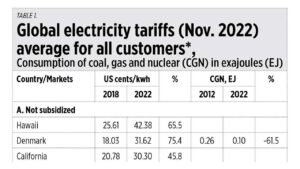DICT eyes deployment of Starlink services to communities by Q1 2023

By Arjay L. Balinbin, Senior Reporter
THE DEPARTMENT of Information and Communications Technology (DICT) expects to deploy Starlink broadband service to geographically isolated and disadvantaged communities by the first quarter of 2023.
“Hopefully (by first quarter of 2023). We are optimistic because we are more proactive than we have been,” DICT Secretary Ivan John E. Uy told reporters during a gathering on Wednesday.
“We anticipate this technology, so I am already preparing all the documentations and requirements as of now so it will be ready to launch,” he added.
The DICT and Elon Musk’s Space Exploration Technologies Corp. (SpaceX), the parent company of Starlink Internet Services Philippines, Inc., presented to journalists on Wednesday the satellite dish and router that will be used to receive signals from space.
Starlink hopes to make its broadband service commercially available in the Philippines by December, SpaceX Government Affairs Senior Manager Rebecca Hunter said during a briefing.
The Philippines is set to be the first country in Southeast Asia to experience Starlink’s services, she said.
The company’s broadband service uses a low-Earth orbit satellite system designed to deliver broadband internet connectivity with speeds of 100 to 200 Megabits per second to isolated and disadvantaged areas where laying fiber cables is difficult. Major telecommunications service providers regard such areas as commercially unviable because of the significant investment needed to put up infrastructure.
With Starlink’s broadband service, it will be cheaper to provide connectivity to unserved and underserved areas such as mountains, islands, and remote villages, according to Mr. Uy.
The Starlink kit will be offered for $599, while the monthly service will be $99, SpaceX’s Ms. Hunter said.
Mr. Uy said people in remote areas, especially farmers and fisherfolk, may not be able to afford such amounts, so the DICT, in partnership with local government units, will initially cover the cost of providing Starlink service.
“We do have funds to deploy this under our free WiFi program. We don’t expect every house to have this device. It will be set up in certain locations within a barangay (village),” he said.
“What will happen is that we will shoulder the cost for them until such time that the Department of Social Welfare and Development or the local government can give us some feedback that the community has risen out of poverty.”
The DICT is currently working with local governments in identifying the areas that will be covered by the program. Mr. Uy said the government hopes this would help Filipinos in these areas participate in the digital economy.
In his first address to the nation on Monday, President Ferdinand R. Marcos, Jr. said he had tasked the DICT to deploy digital connectivity across various islands.
“This will be done through the implementation of the National Broadband Plan, the common tower program, connecting our geographically isolated and disadvantaged areas via our ‘Broadband ng Masa’ project.”
“All relevant modes of digital transport should be utilized. These may be through a combination of terrestrial or submarine fiber optics, wireless and even satellite technology,” he added.
Mr. Marcos also noted that with the amended Public Service Act signed by former President Rodrigo R. Duterte, his administration foresees “an increase in direct investment of overseas players.”
According to Mr. Uy, there are various foreign players that have expressed intention to offer satellite internet services in the Philippines.
“Those proposals have to be assessed in terms of costs and benefits,” he noted.




